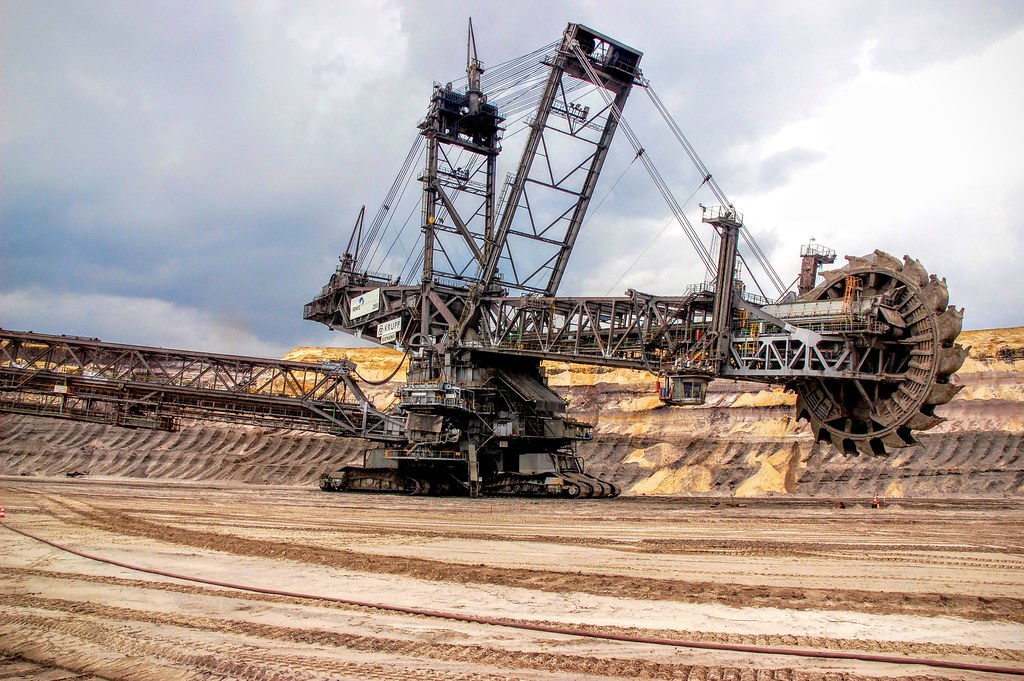
The Bagger 288, crafted by the German company Krupp, stands as a colossal titan amidst bucket wheel excavators, emblematic of engineering prowess and industrial might. This huge machine, born in 1978 after a meticulous five-year design and manufacturing phase followed by another five years of assembly, commands attention with its height reaching 96 meters, a length spanning 225 meters, and a weight reaching 13,500 tons.
Notably, the value of this engineering marvel is estimated to be around 100 million dollars.
With its extraordinary features and significant cost, the Bagger 288 is indeed the most expensive excavator in the world
Bagger 288 boasts an unparalleled capacity, capable of moving an astonishing 240,000 cubic meters of coal and overburden in a single day—an equivalent workload to that of 40,000 laborers or more than 10,000 dump truck loads. Its operation is driven by aoperator stationed within the cab, overseeing every movement of the behemoth with precision and safety ensured through comprehensive safety mechanisms.
In the heart of Germany’s Rhineland lies the Hambach open pit mine, the operational epicenter where Bagger 288 works. Here, the machine’s efficiency is showcased as it facilitates the extraction of approximately 40 million tons of coal annually. Meanwhile, the discarded overburden, amounting to around 250 million cubic meters per year, finds its resting place on the periphery of the worked-out sections of the mine.
Bagger 293
In 1995, TAKRAF constructed the Bagger 293, which is used in a lignite mine near Hambach in Germany, the same location as its sibling, the Bagger 288. The machine stands 96 meters tall, weighs 14,200 tons, and requires five people to operate. It can move 240,000 cubic meters or 218,880 tons of soil per day, matching the capacity of the Bagger 288.
Bagger 288 vs Bagger 293: Comparison
Below, you’ll find a schematic comparison.
Bagger 288
| Type | Bucket-wheel Excavator | |
| Manufacturer | ThyssenKrupp (Germany) | |
| Year of Production | 1978 | |
| Dimensions (L x W x H) | 220 m x 46 m x 96 m | |
| Dimensions in US units (L x W x H) | 721 ft x 151 ft x 315 ft | |
| Weight | 13,500 tons | |
| Weight in US units | 29,800,000 lbs | |
| Power Source | 16.56 MW of externally supplied electricity | |
| Blade Volume Capacity | 6.6 m3 | |
| Blade Volume Capacity in US units | 8.6 cubic yards | |
| Blade Weight Capacity | 6.5 t | |
| Blade Weight Capacity in US units | 14,330 lbs |
Bagger 293
| Type | Bucket-wheel Excavator | |
| Manufacturer | TAKRAF | |
| Year of Production | 1995 | |
| Dimensions (L x W x H) | 225 m x 46 m x 96 m | |
| Dimensions in US units (L x W x H) | 738.2 ft x 150.9 ft x 314.9 ft | |
| Weight | 14,200 tons | |
| Weight in US units | 31,300,000 lbs | |
| Power Source | 16.56 MW of external electricity | |
| Blade Volume Capacity | 15.0 m3 | |
| Blade Weight Capacity | 15.0 t | |
| Blade Volume Capacity in US units | 19.6 cubic yards | |
| Blade Weight Capacity in US units | 33,069.3 lbs |
Pop Culture
The Bagger 288, with its cyberpunk appearance, fits perfectly into dystopian or evocative settings and has been featured in movies and songs.
Movie
In The Hunger Games: Catching Fire, observant viewers can spot the Bagger 288 in the background of District 12.
Additionally, in Ghost Rider: Spirit of Vengeance (2012), the rider takes control of a Bagger 288, transforming it into a fiery instrument of destruction against adversaries.
Music
It has been immortalized in a song by British comedian Joel Veitch as a guardian against apocalyptic threats, juxtaposed with footage from a German TV documentary chronicling the saga of bucket wheel excavators in the Ruhr area.
Similar machines are also the set of famous music festivals, like the one in Ferropolis, where you can see and touch 6 of the biggest machines in the world.
If you need steel bushings for your machinery, request our catalog here.
